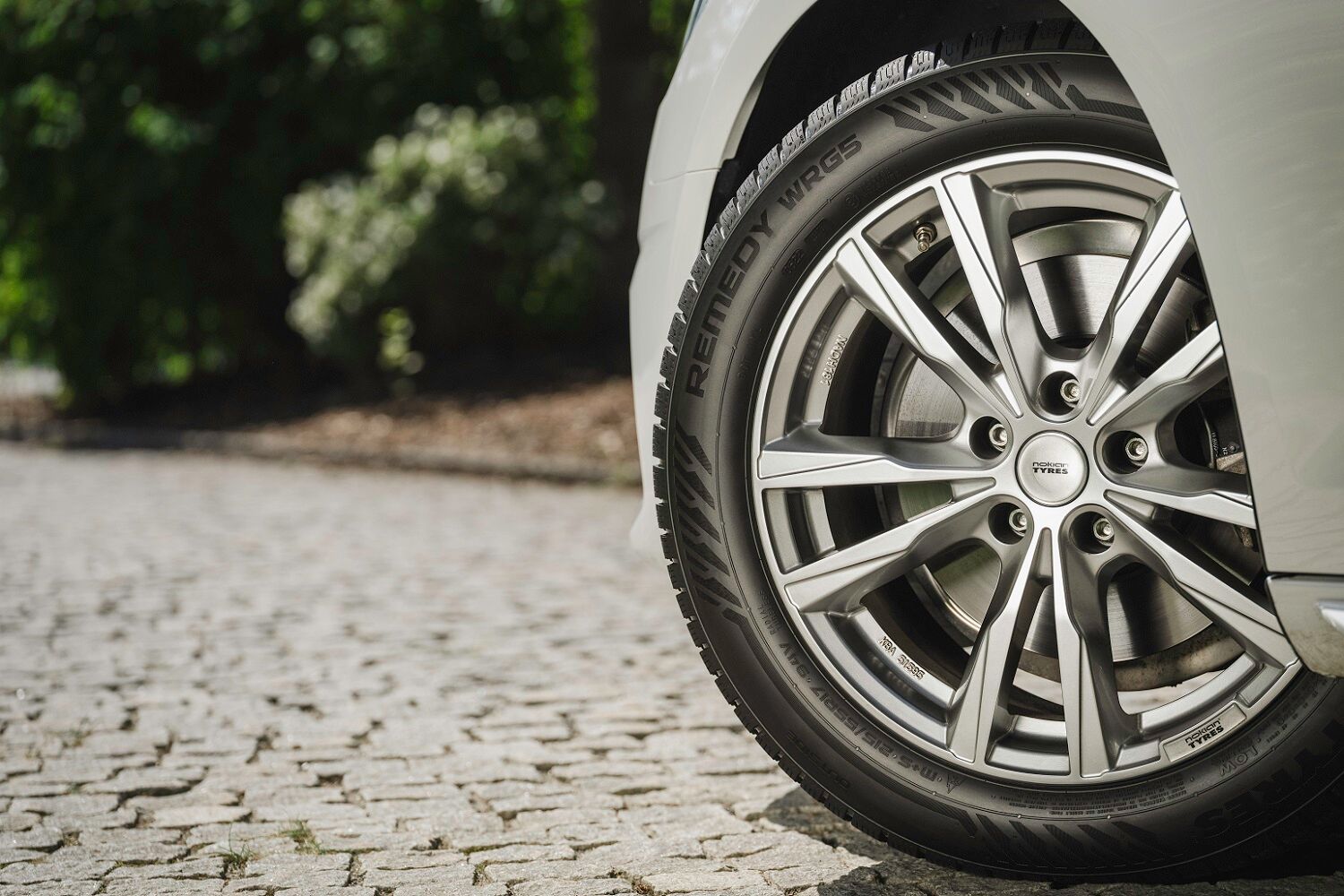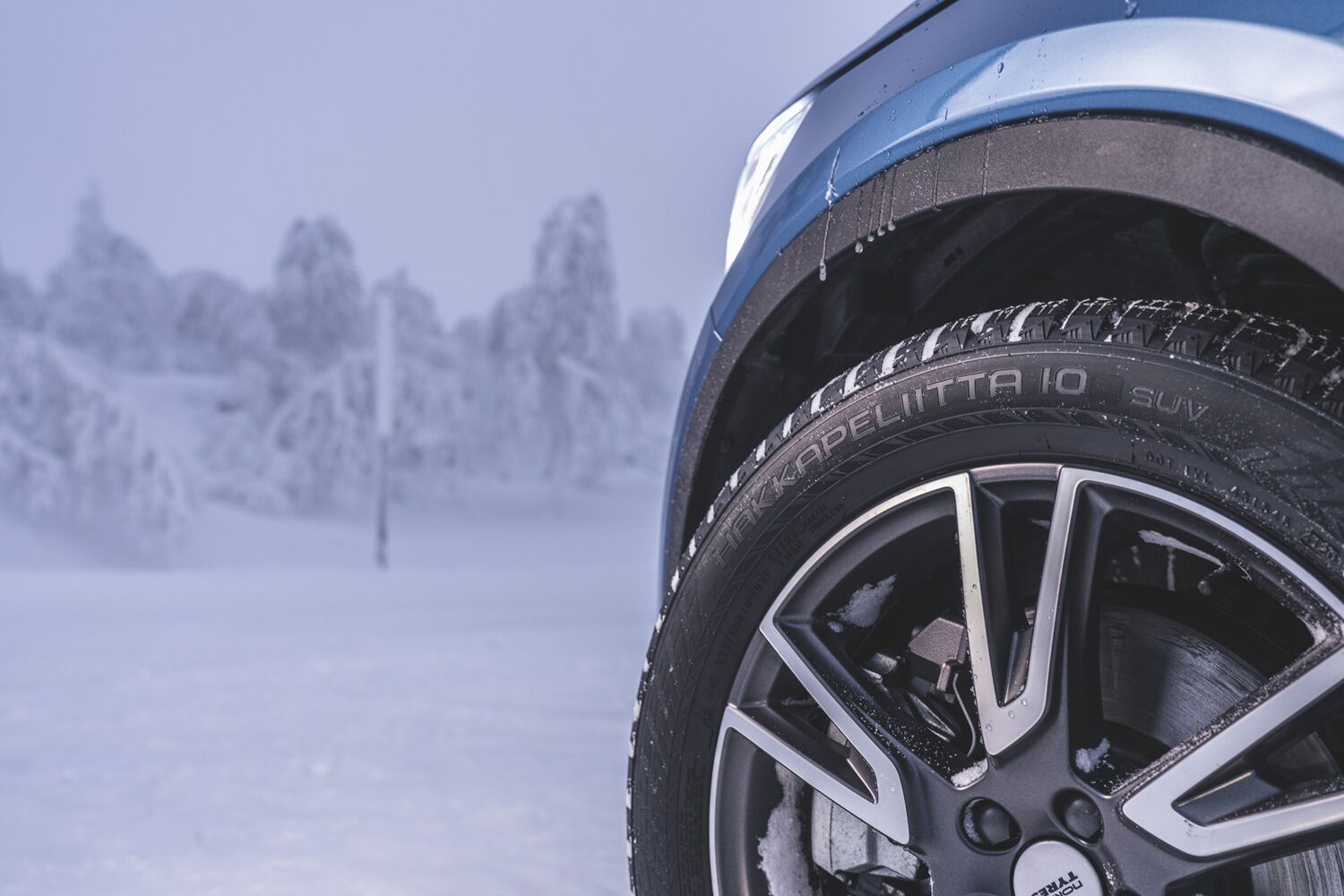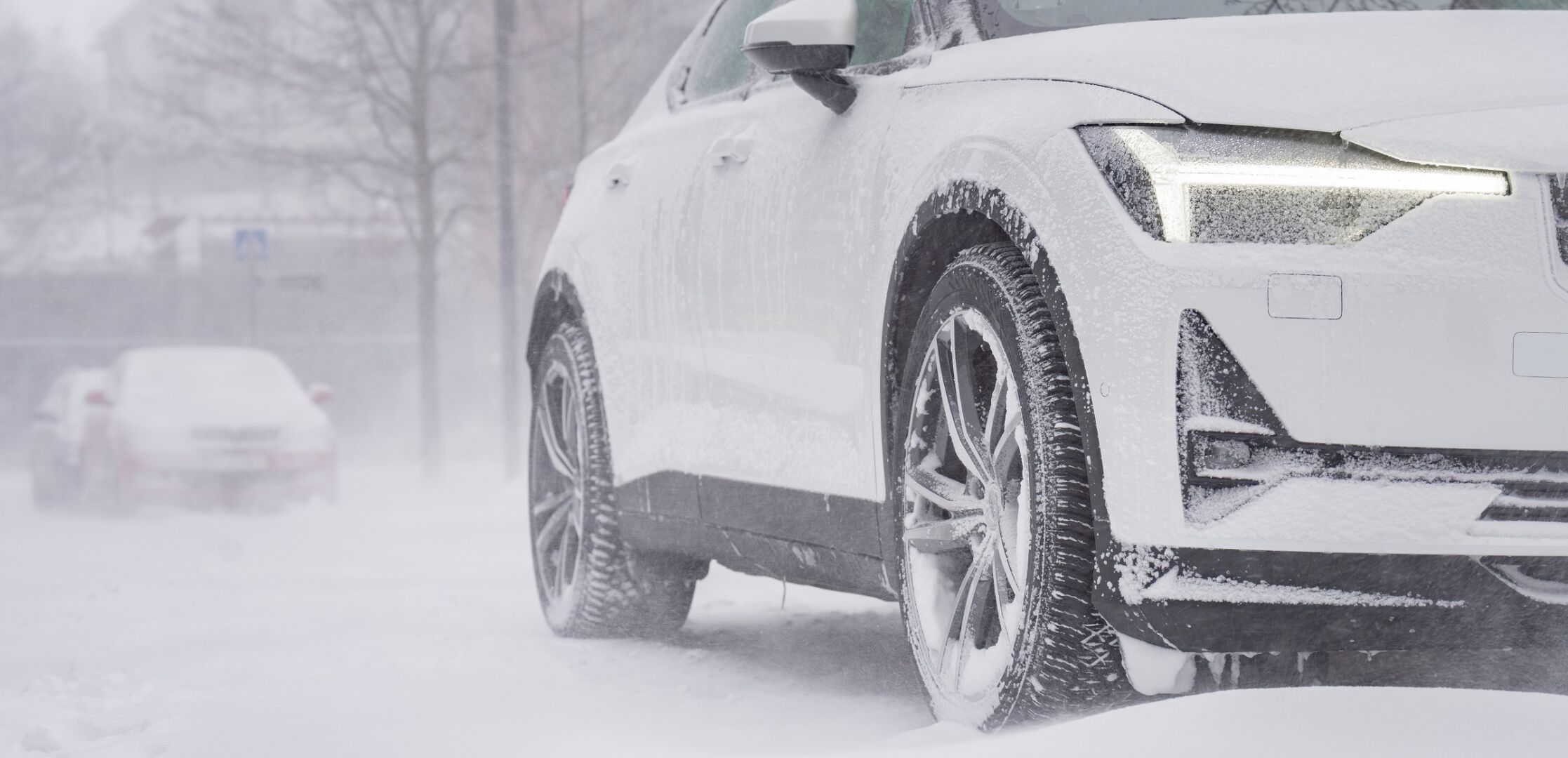
Tires have a direct impact on your vehicle's fuel efficiency. Find out how to choose fuel-efficient tires and consume less fuel while driving.
Tires have a direct impact on your vehicle’s fuel economy. You can decrease fuel consumption by choosing high-quality tires with low rolling resistance. Better fuel economy helps you reduce fuel costs and carbon emissions. This way, you can do your part as a car owner to lower the environmental impact of driving.
By choosing economical tires, you can drive more miles per gallon, reduce fuel costs, and drive more environmentally friendly. Nokian Tyres’ products are designed for excellent driving performance and safe, fuel-efficient traveling. Contact your local Nokian Tyres dealer for help choosing the best tires for your vehicle and driving conditions.
How do tires affect a vehicle’s fuel consumption?
Choose premium tires to lower your tires’ rolling resistance and, in turn, their fuel consumption. Say, for example, a set of tires is driven for around 20,000–30,000 miles (~32,100 km - 48,200 km). With more economical tires, the savings of driving that distance with premium tires can add up to 500 USD, depending on the price of fuel. Your choice in tires is just one way to improve fuel economy; how you drive and maintain your tires also has an effect on fuel consumption.
Tires affect fuel economy mainly through their rolling resistance, which is influenced by various factors. These include, for example, tire diameter, tire width, and the materials used to manufacture the tires. Monitor the condition of your tires regularly, as tire tread wear and tire pressure can have a great impact on rolling resistance.
Rolling resistance
Rolling resistance is the force opposing the motion of tires as they roll over a driving surface, leading to energy loss. This in turn affects your tires’ fuel efficiency. The main causes of rolling resistance are friction with the ground, and wind drag.
When rolling resistance is high, more energy is required to overcome this resistance, resulting in increased fuel consumption. The lower the rolling resistance, the more miles (km) you can drive with a gallon (liter) of fuel. In addition to more economical driving, low rolling resistance reduces tire noise and enhances the overall driving experience.
You can reduce rolling resistance as much as possible by maintaining your tires properly, and by opting for high-quality, low rolling resistance winter tires and all season tires by Nokian Tyres.
Tire tread wear
The condition of your tires’ tread substantially impacts fuel efficiency. Worn tires are more prone to slipping, leading to increased fuel consumption. Tires with a higher tread depth have better traction and help reduce fuel consumption.
Monitor tire wear regularly to check that your tires are performing as they should. We recommend replacing tires when their tread depth is no less than 4/32 of an inch (3 mm). For winter tire tread depth, replace tires around 6/32 of an inch (~4.7mm). Nokian Tyres has made it easy to check the tread depth on your tires. The surface of the tire has a driving safety indicator that tells you what level your tread depth is at. Remember to rotate tires regularly to help maintain even tire wear.

Tire pressure
When tires are underinflated, they create more rolling resistance, making the engine work harder to move the vehicle. You can enhance fuel economy by using tire pressure levels recommended by your vehicle’s manufacturer.
A tire pressure monitoring system (TPMS) monitors that tire pressure does not significantly drop all of a sudden. Note that even slight underinflation can create uneven wear patterns and increase the fuel consumption of your vehicle.
Correct tire pressure reduces rolling resistance, makes your tires last longer, and helps keep tire noise at a low level. We recommend checking tire pressure at least once a month. In addition, you should check your tire pressure before embarking on long journeys or carrying heavy loads.
More ways to increase fuel efficiency
While the U.S. Department of Transportation's National Highway Traffic Safety Administration (NHTSA) has defined fuel economy standards that need to be followed by vehicle manufacturers, there are ways you can improve fuel economy:
- Choose premium tires with low rolling resistance
- Use the recommended tire size for your vehicle
- Avoid sharp acceleration and hard braking
- Use cruise control to maintain constant speed on highways
- Regularly monitor tire pressure
- Check tread depth and replace worn tires
For fuel-efficient driving, you should also know the vehicles’ MPG values in the U.S., or L/100 km in Canada. MPG, which stands for miles per gallon, quantifies the distance a vehicle can travel for a gallon of fuel. If you live in the United States, combine a vehicle with high MPG and low rolling resistance tires for the most fuel-efficient driving. In Canada, the lower the liters per 100 kilometers (L/100 km) rating, the better the fuel economy.
Nokian Tyres – enhancing fuel economy
Due to our origins as a Finnish tire manufacturer, our tires and patented technologies are developed within strict European guidelines of fuel economy. The majority of Nokian Tyres’ products are in the best A, B, or C categories on the European Union (EU) fuel economy scale. For North American drivers, this translates to tires with better fuel economy and lower fuel consumption. Tires with a higher EU fuel economy rating can drive more miles per gallon, reduce fuel costs, and allow for driving in a more environmentally friendly way.
Nokian Tyres’ winter tires, all weather tires, all terrain tires and all season tires are designed to perform optimally while having low rolling resistance, reducing your combustion-engine-vehicle's fuel consumption and saving money at the gas station. Choose high-quality tires for smarter driving, and get the best gas mileage out of your vehicle. If you want to know more about fuel economy and choose the right tires for your vehicle, contact your local Nokian Tyres dealer:
Please remember that it is the driver’s responsibility to ensure their tires are safe and suitable for their vehicle and to follow the vehicle’s manufacturer´s guidelines for proper use and maintenance. Consult your closest Nokian Tyres dealer or your vehicle’s manufacturer for specific advice.


